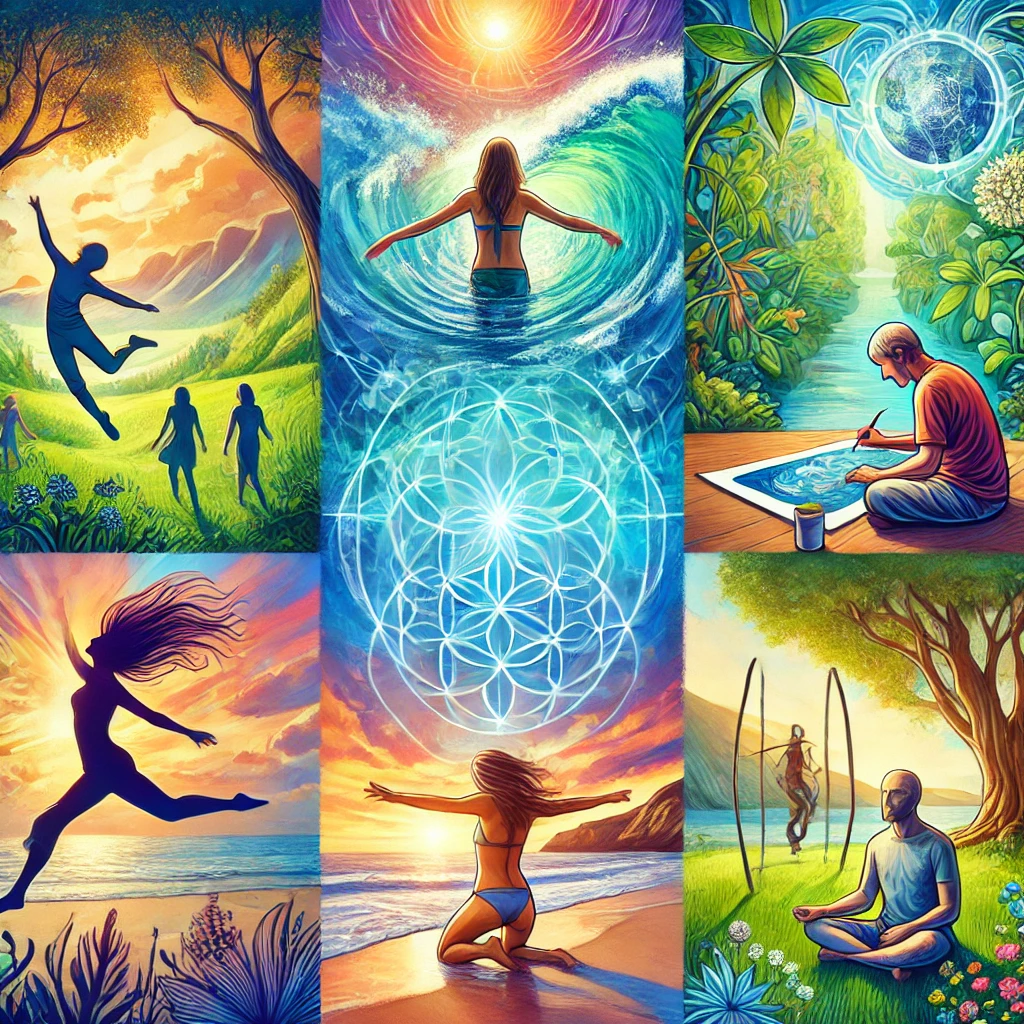🌍 The Importance of Grounding: Finding What Works for You
Have you ever felt completely untethered—your mind racing, your energy scattered, or your emotions spiralling? For many of us, especially those who are neurodivergent, grounding techniques offer a way to come back to ourselves, reconnect with the present moment, and regain clarity.
But here’s the thing—grounding looks different for everyone. What works for one person may not work for another. Some find peace in stillness and meditation, while others (like me) feel most grounded when moving, creating, or even working.
For me, grounding isn’t about sitting still or deep breathing—it’s about movement, engagement, and activity. The traditional recommendations of meditation or visualisation don’t help me reconnect with myself the way that swimming 🏊, dancing 💃, walking 🚶, jogging, or even trampolining 🤸 do. My grounding comes from physicality, from feeling my body move in rhythm with the world around me. More than that, grounding helps me feel alive, capable, and connected with something bigger than myself. ✨
🌿 Why Grounding Matters
When life feels overwhelming, grounding helps bring us back to the present. It reminds us that we are here, in our bodies, and safe. This is particularly important for neurodivergent individuals who experience sensory dysregulation or high emotional intensity.
Without grounding, it’s easy to spiral into overthinking, dissociation, or burnout. But grounding isn’t a one-size-fits-all solution. It’s about experimenting and finding what genuinely makes you feel present, connected, and regulated.
🎭 Exploring Different Grounding Techniques
The beauty of grounding is that it can take many forms. While some people find stillness and breathwork helpful, others, like me, need movement and engagement. Here are a few examples of grounding techniques and how they work differently for different people:
- 🏊 Swimming – The sensation of water provides deep pressure, resistance, and a full-body experience that soothes and regulates the nervous system. I also love the social aspect of catching up with friends who go at the same time every week, and the great conversations that emerge from these shared moments.
- 💃 Dancing – Whether it’s structured dancing in formation or moving freely like no one’s watching, the combination of rhythm, movement, and social interaction creates joy and connection.
- 🚶 Walking – Whether it’s a park run, walking around your office, or simply going to put the kettle on, walking is a simple yet effective way to regulate energy levels, process thoughts, and get fresh air.
- 🤸 Trampolining – While it’s usually aimed at children, it’s also great fun for adults! The repetitive bouncing creates sensory feedback that can be both energising and calming.
- 🎨 Creative Expression – Activities like painting, writing, DJing, music production, or video production can help externalise emotions, process thoughts, and refocus attention.
- 🌳 Nature Connection – All things nature and sea! Whether it’s gardening, hiking, swimming in the ocean, feeling the sand between your toes, or lying on the grass, connecting with nature brings a deep sense of grounding and connection to the earth.
- 🧹 Daily Tasks & Organisation – Completing tasks that bring a sense of satisfaction, independence, and clear old energy, such as reducing clutter, emptying bins and recycling, washing up, emptying the dishwasher, restocking toilet rolls, shopping, tidying a room, and making the bed, can create a structured environment that supports a switched-on and functional state of mind.
💼 Grounding as a Paid Activity
One of the biggest revelations for me has been that I am most grounded when I am engaged in activities where I am also being paid.
That might sound counterintuitive—many people associate grounding with stepping away from work. But for me, when I’m facilitating a class, teaching a skill, or actively working, I am fully engaged. There is no space for overthinking or getting lost in my head. Instead, I am present, purposeful, and connected.
This might be true for others as well. Some people find purpose and grounding in productivity, service, or structured tasks. If you’ve ever felt completely ‘in flow’ while working, you may already be experiencing this kind of grounding without realising it.
On the other hand, some people need complete detachment from work to feel grounded. Neither is right or wrong—the key is to identify what brings you into the present moment in a way that feels natural and effective for you.
🔍 Finding Your Own Grounding Practice
If you’re struggling to find grounding techniques that work, consider these questions:
- When do you feel most present in your body? 🤔
- What activities make you feel safe, connected, and regulated? 💭
- Do you prefer movement or stillness? 🏃🧘
- Does structure help, or do you need something more free-flowing? 📋🎨
- Have you noticed a connection between grounding and productivity in your life?
Grounding is not about following a prescribed list of techniques—it’s about discovering what works for you. Whether it’s moving, creating, working, organising your space, or simply being in nature, the most important thing is that it helps you feel connected to yourself and something greater.
📢 What Works for You?
Grounding is deeply personal, and what works for me may not work for you. I’d love to hear about the grounding techniques that help you feel most connected.
💬 Drop me a message or share your thoughts—let’s start a conversation about what grounding means to each of us! 😊
#Grounding #Mindfulness #Neurodivergent #SelfCare #MentalHealth #EmotionalWellbeing #StayPresent #MovementMatters #CreativeFlow #NatureHealing #Productivity #DailyHabits #EnergyManagement #InnerBalance #WellbeingAtWork #FindYourFlow

